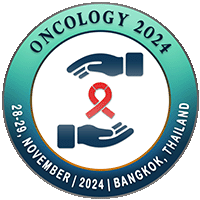
Rahul Patel
New Civil Hospital, IndiaTitle: Giant Cell Tumour of the Small Bones of Hand and Foot
Abstract
Introduction
Giant cell tumor (GCT) or bony tumor mainly involving long bones of arms and legs is very rarely associated
with the small bones of hands and feet. Due to its nonspecific signs and symptoms, it is not easy to diagnose
based on clinical findings; therefore, histopathological evidence is required to confirm it.
Method
A total of 16 patients with positive histopathological bone lesions enriched with giant cells were included in
our study. After a complete evaluation of their case records, the required radiological assessment was carried
out. Campanacci's method of staging was used to evaluate the advancement of lesions. The Musculoskeletal
Tumour Society (MSTS) score was recorded postoperatively. All the patients were followed up for a mean
duration of 2.8 years until they were lost to follow-up.
Result
The result of the current study shows that 62.5% of our patients presented in their twenties and 81.25% of
patients came at a reasonably advanced stage. Hand and foot were involved in 1:1 cases. Patients were
treated by one of the following options: extended curettage with bone graft or cement, wide excision, or en
bloc resection. Phenol, a neoadjuvant, was used in all patients. Two of our patients (6.25%) who underwent
curettage with bone graft showed up with recurrence during follow-up - one was then treated with wide
excision and the other with amputation.
Conclusion
Giant cell tumors should undoubtedly be aggressively approached with the goal of preserving limb function
while reducing recurrence risk to as minimal as possible. GCT of hand is more aggressive comparatively and
should be treated accordingly.
Biography
TBA!!!

